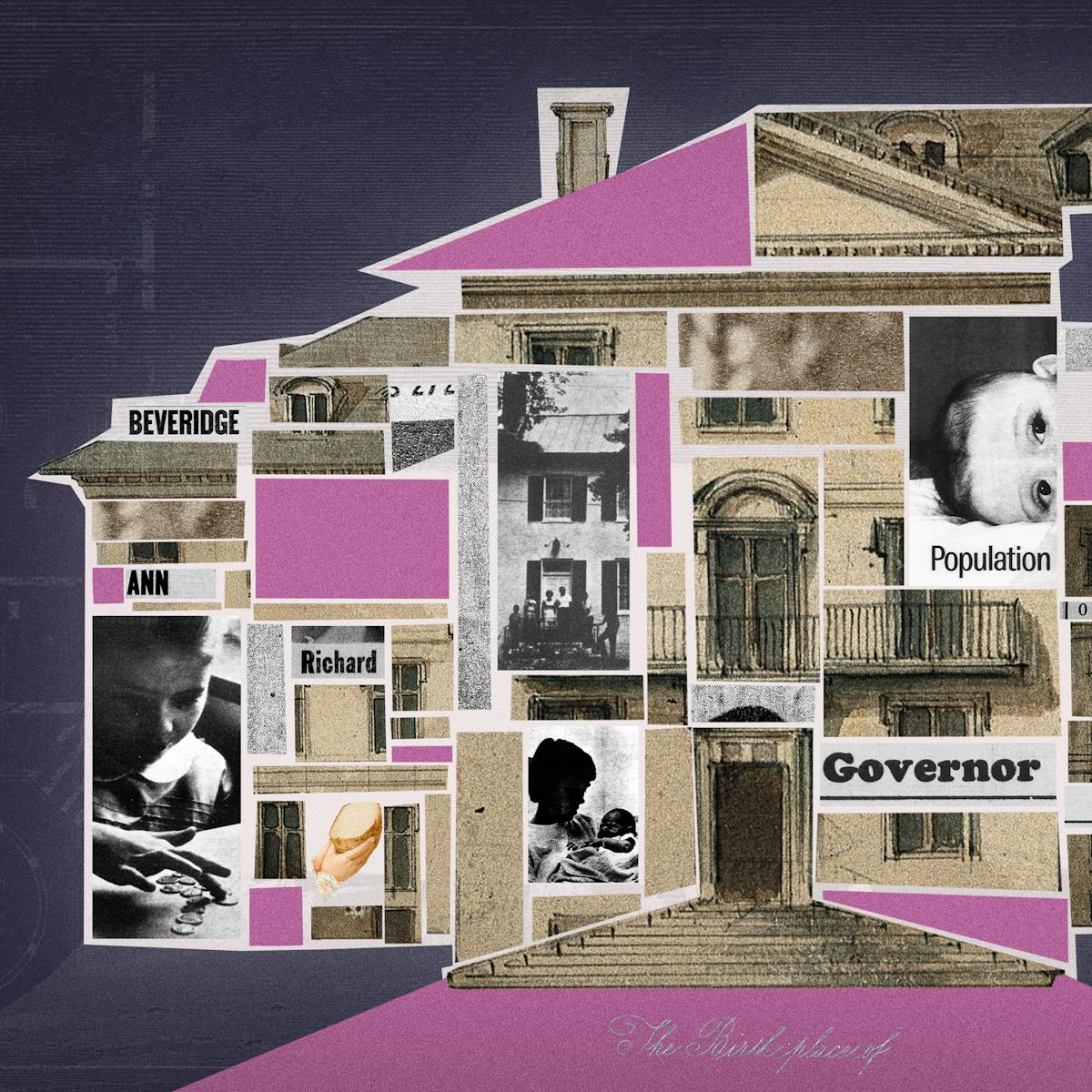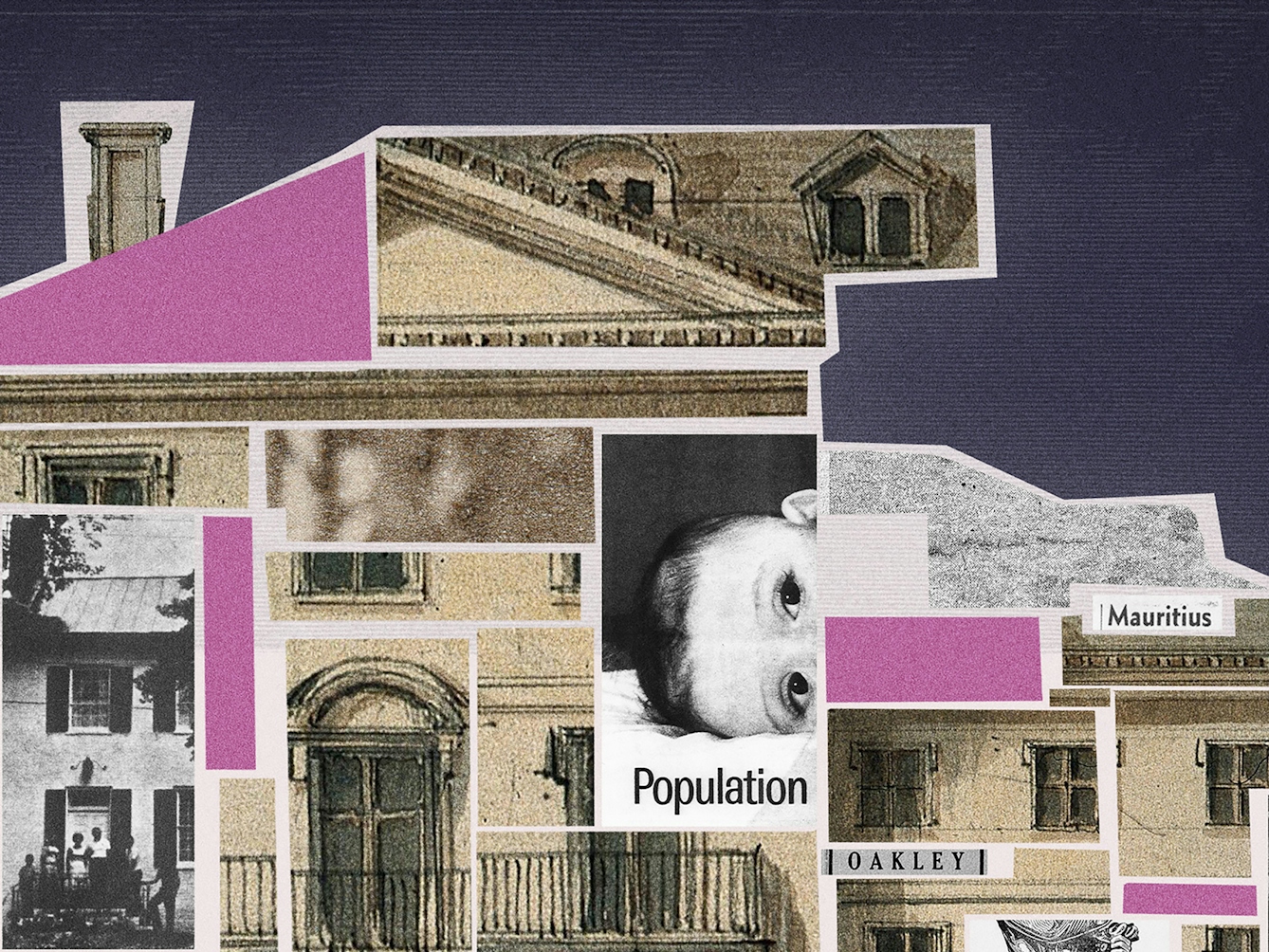William Beveridge and Richard Titmuss shaped British social welfare policy in the mid-20th century. Indy Bhullar, Curator for Economics and Social Policy at the London School of Economics Library, tells us how their eugenic thinking became baked into the foundations of our welfare state.
Eugenics and the welfare state
Words by Indy Bhullarartwork by Gergo Vargaaverage reading time 6 minutes
- Article

In 1942 William Beveridge’s influential report ‘Social Insurance and Allied Services’ was released to widespread public acclaim. Almost overnight he became one of the most famous figures in British public life, and his paper was soon being eponymously referred to as the Beveridge Report. The report helped form the intellectual framework upon which the welfare state was built, championing much broader state support to help combat the five great evils that haunted British society, namely: ignorance, idleness, want, disease and squalor.
Like many of his intellectual contemporaries, Beveridge was also a eugenicist. In February 1943, a couple of months after his report had been released, he gave a speech to the Eugenics Society called ‘Eugenic Aspects of Children’s Allowances’. The speech was the Galton Lecture, named in memory of Sir Francis Galton, a central figure in the establishment of eugenics as a field of study. Beveridge’s aim was to at least partly allay the concerns of the members of the society and reassure them that his redistributive proposals would be good for them (and those like them), as well for as the masses.
Many of the proposals Beveridge made in his report would have alarmed his fellow eugenic thinkers. Eugenicists were interested in encouraging some people (educated, white, middle-class and ‘healthy’) to have children and making it very difficult for others (who were deemed ‘unfit’). The idea of a state-run, universal social safety net, shielding all rungs of society from the debilitating impact of poverty or ill health, was starkly at odds with these commonly held eugenic principles.
Children’s allowances were no different. All families would be given eight shillings a week for each child born (or for the second and subsequent children for families with one working parent), reducing impoverishment and early infant mortality.

“The idea of a state-run, universal social safety net, shielding all rungs of society, was starkly at odds with these commonly held eugenic principles.”
Encouraging the middle classes to breed
How did Beveridge convince his audience that his scheme would support the enrichment of the British race rather than contribute to its downfall? Central to Beveridge’s thesis was the inverted birth rate, which is the idea that wealthier people tend to have fewer children than those further down the economic order. “All the way up the scale you get fewer and fewer children,” he said.
Alongside this went the idea that children born into smaller families tended to be more successful than those born into larger ones. These successful children tended to then go on to have smaller families themselves. Beveridge referred to this as the “social promotion of the infertile” and in starker terms claimed that “economic success means biological failure”. Children’s allowances, Beveridge argued, balanced the smaller numbers of middle-class births by allowing those poorer people with “good virtues” to keep their children in school; the children would then get better jobs and more easily become middle class.
Beveridge made clear that his subsistence-level allowances wouldn’t be enough to encourage more children for the wealthy and highly educated. The way to achieve that, he proposed, was through occupational schemes that paid middle-class professionals allowances to have children. According to Beveridge, these professionals included “[teachers] of all kinds, in universities and schools, the civil service, law, medicine, accountancy and others”. Beveridge had used his influence as Director of the London School of Economics (LSE), to establish such a scheme, which provided a generous payout only to academic staff, incentivising them to have children.
By the time Beveridge gave his speech in 1943, he was already a celebrity of some renown. His ascent to this position of political and academic authority could be regarded as unsurprising, given his solidly middle-class background, schooling at Charterhouse before graduating from Oxford University.

“Children’s allowances, Beveridge argued, balanced the smaller numbers of middle-class births by allowing those poorer people with ‘good virtues’ to keep their children in school.”
The influence of eugenicist networks
Beveridge’s upbringing contrasts quite noticeably with another member of LSE’s faculty who arrived at the school in 1950. Richard Titmuss, like Beveridge, spent a long stretch of his career at LSE where, as the first Professor of Social Administration, he wrote in strong support for an expanded and more generous welfare state.
Titmuss argued against the idea of genetic inheritance as the be-all and end-all.
Titmuss spent almost his entire career at LSE, but his journey to academia was not straightforward. He had formerly worked at an insurance company, having left school at 14. He had few formal academic qualifications, even by the time he was offered the professorship. Instead, as described by Ann Oakley, a feminist sociologist and Titmuss’s daughter, it “was his active networking within the Eugenics Society that brought him new influential friends and entrées into both the publishing and academic worlds”.
Titmuss joined the Eugenics Society in 1937 and remained a member for the rest of his life. It was through his membership that Titmuss met Alexander Carr Saunders, Beveridge’s successor as Director of LSE, who made his appointment a reality.
Eugenics Society membership also secured Titmuss a commission to write a history for the government about social policy issues through World War II, thanks to Sir Keith Hancock. The society even provided backing in order to help with the publication of two books, including his very first, ‘Poverty and Population’, in 1938.

“Titmuss was part of a group of younger eugenic thinkers who favoured more statistically rigorous analyses of larger population groups and demography.”
Socioeconomics and population control
The timing of Titmuss’s membership coincided closely with the hideous influence that eugenic ideology was wreaking in Nazi Germany. The tainted association led to many distancing themselves from eugenics.
Titmuss was part of a group of younger eugenic thinkers who altered the direction of eugenics by moving beyond its hereditist shibboleths. In his 1943 book, ‘Birth, Poverty and Wealth’, Titmuss argued against the idea of genetic inheritance as the be-all and end-all, and found that socioeconomics played a more significant role in infant mortality than genetics.
This new group favoured more statistically rigorous analyses of larger population groups and demography. Birth and fertility remained of significance, but both were linked more explicitly to the broader social environment. For Ann Oakley, as she said in her book ‘Father and Daughter: Patriarchy, Gender and Social Science’, her father’s “innovative social demography helped to dig the British eugenics movement out of the nasty hole of its association with German national socialism”.
For many eugenicists, the shift towards demography also fuelled discourse around the fears of overpopulation. In the 1950s and 1960s, even as independence movements gained momentum, Britain retained a hefty imperial influence. The global growth of populations, in particular poor, non-white populations, was of much concern to (post)colonial officials.
In 1961 Titmuss was invited to produce a report for the Governor of Mauritius, at the time a British colony. Members of the colonial administration had for some time raised fears over the island’s population growth. Titmuss recommended several state-funded measures that were aimed at reducing the size of families. Among these were the provision of free birth-control education and the payment of family allowances for the first three children to women over the age of 21 who had taken some birth-control advice.
While these schemes may have felt ostensibly liberal in their approach, they nonetheless supported the state’s interventionist aim for population control.
About the contributors
Indy Bhullar
Indy Bhullar works at LSE Library as a curator for Economics and Social Policy. His main focus is to promote and draw attention to the archives and special collections by curating exhibitions, organising public events and teaching.
Gergo Varga
Gergo Varga is an illustrator, collage animator, motion designer and the name behind ‘varrgo’. varrgo is a place where Gergo creates and animates mixed-media projects, particularly in the style of collages and cut-outs. He enjoys working with things that have already had a life, from old magazines to scribbles in a notebook. His longest-running creative project is ‘oners’, where he visualises one-minute quotes from contemporary thinkers. Gergo created the animations and illustrations for ‘Apocalypse How?’ and ‘Eugenics and Other Stories’, published on Wellcome Collection Stories.

